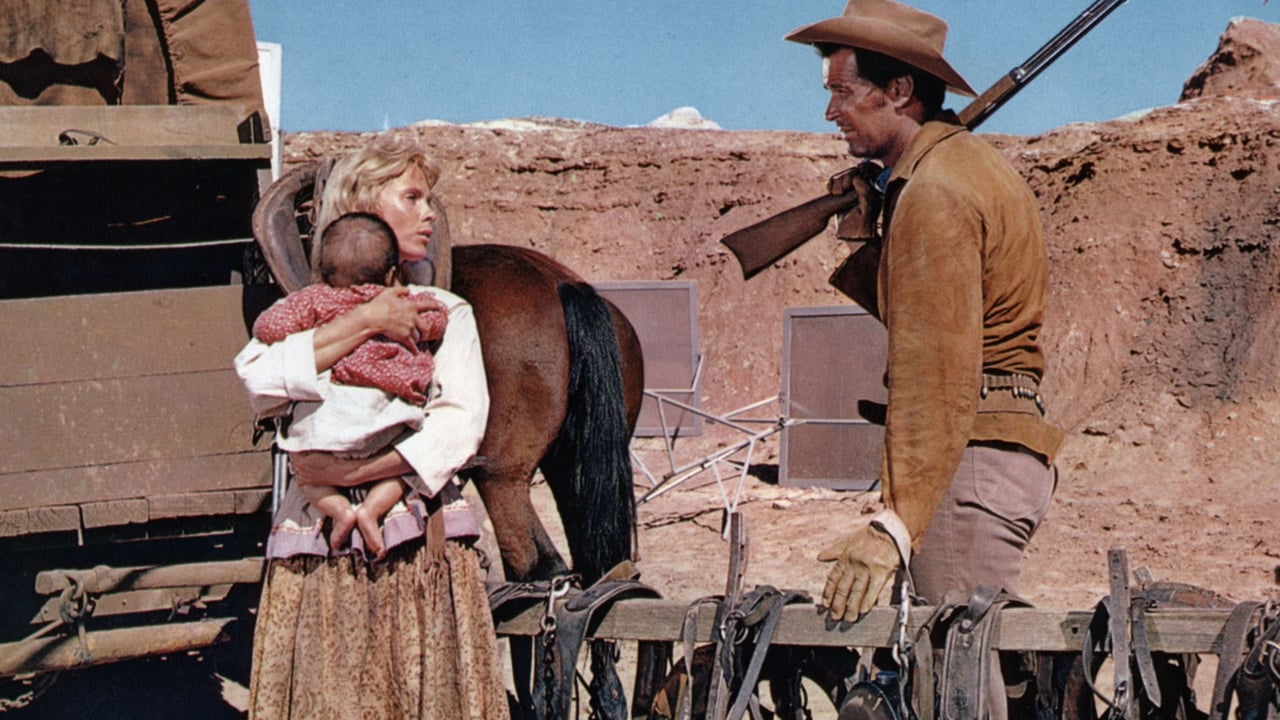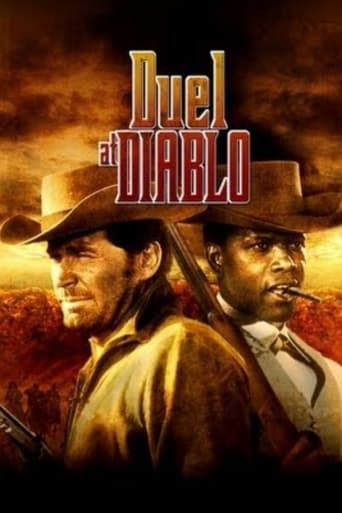

One of my favorite westerns, really for the cast, as you have great character actors who really believed in the westerns of yesteryear. They felt like they were the cowboys and cowgirls, and riding the horses and shooting the guns was more natural to them, then having to spend 3 months training with arms specialists. I also like the screenplay, but there I am prejudice as it was written by my father, Michel M. Grilikhes, who loved westerns also. Its very hard to see James Garner in a western movie and not remember him in his giant role on television as Bret Maverick on Maverick, If my memory is correct I think he lasted for 2 or 3 years, then had a fight for more money lost and moved on, too bad because the show really turned into his show, not the Brothers Maverick show. I don't think as a child I missed an episode.Another cast member was Sidney Poitier, not with a giant part but he was a giant actor at this time already with an Academy award in his pocket and many nominations and great roles like Porgy and Bess. Actually, he was nominated for Top Male Action Performance for Duel at DiabloThe film was shot in the beautiful state of Utah with some of the most wonderful scenery in the world, perfect for the frontier days, as thats where the Mormons traveled through, some staying and some continuing on their wagon train! Great all round film!
... View Morein an age when black actors were confined to black roles, this film shows Poitier in a role that could easily have been played by a white actor-plus he's the coolest dude in the movie.Bill Travers doesn't have to do an American accent. this was from a time that people believed that there could be major characters with foreign accents in the USA who weren't villains. Of course the USA at this time, and at any time, had plenty of odd accents. Except in movies.The credits are waaaay more imaginative that you'd normally expect.The music is highly "different" The camera-work is very strange- all those overhead shots.I love this movie, and is a film I can watch again and again. It's very stylised-the lines are delivered like they were from a comic book.You know-the sort of thing Quentin T "discovered"
... View MoreLots of conflict and shooting in this rather routine Western of US cavalry versus Apaches. Bibi Andersson, who practically glowed in Ingmar Bergman's movies, is only a subsidiary character and looks like just another Hollywood blond. James Garner could be a fine actor when the role was right and Sidney Poitier was one of the most skilled of his generation. I have no idea why they dressed him up in a cowboy hat, fancy vest, skin-tight trousers, and black boots,.But what can you do with a B script that's enlivened by a few unusual incidents. Here are two unusual incidents. The Apache are chasing a cook wagon. And what do they do? They SHOOT ONE OF THE HORSE and the wagon has to stop! Hallelujah! Finally, a move script allows the Indians to figure out that if you want to stop a wagon you don't necessarily have to pick off the guy driving it.Here's another incident. Dennis Weaver is a miscreant who finally sides with the good guys. It doesn't save him from being brutally tortured over a fire by the Apache, to the point at which he later begs the cavalry men to kill him. The Apache, by the way, weren't racists. They were indiscriminately brutal, as many other Western tribes were. Weaver may have been roasted alive, but others were de-boned, beginning with their fingertips.But these scenes can't redeem a B script that has a lonesome patrol fighting overwhelming odds and being picked off one by one until the final and inevitable rescue by the rest of the cavalry. Want to know what would have been REALLY innovative? They all die. But then who would have paid to see the movie?Very nice location shooting though, among bluffs that alternate gray strata with rust, and the horses for some reason look beautiful, not like just any old horse.
... View More"Duel At Diablo" had me thinking about Sidney Poitier's role, and I'd love to hear his reason for taking the assignment. Considering his appearance in one of my favorite films, "In The Heat Of The Night", a classic study of racism and cultural fear, I wondered how he reconciled the role of a former black military officer helping the cavalry protect a supply wagon through Apache territory, with all the attendant characterizations of the red man as a hostile, savage brute. But Toller (Poitier) did have character, as demonstrated by the apology to Remsberg (James Garner) after learning of his wife's fate, that was an excellent scene.Dennis Weaver surprised me with his portrayal of Will Grange, showing a range of ability that far surpasses my singular impression of him as Matt Dillon's deputy, Chester Goode. He figures in somewhat of a story twist when it's revealed that he had a hand in the death of Remsberg's wife. The showdown you were expecting for the entire film managed to play out in a manner that kept Garner's character honorable, even if revenge was served. It was an effective way to handle the conflict.You know, I'm surprised that an obvious continuity issue hasn't been noted yet regarding the picture. When Remsberg leaves the soldiers for Fort Concho, he's riding a gray horse across the desert, but in the scene when the horse collapses from heat exhaustion, it's brown. A similar error occurs in the Western "Comanche Blanco" near the finale when William Shatner's horse changes color. It makes me wonder why film makers, or even the principal actor, can't remember how the scene started out so it can be finished without an obviously conflicting ending. They must have other things on their mind.At least it was gratifying to see that mathematical accountability came into play regarding the strength of both the Indian band and the cavalry. As the soldier forces dwindled, references were made to that effect, and you had a sense of the attrition. Contrast that with other Westerns where it often seems like one side or the other winds up with just as many men as they started with.You know, it wouldn't have taken much to turn this one into a John Ford/John Wayne cavalry Western. Most of the elements were there except the peaks of Monument Valley and a romantic interest for the leading man. Still, the inclusion of Ellen Grange (Bibi Anderson) as a conflicted white woman with an Apache baby added another layer of intensity to a film already chock full of angst driven characters. You knew she would make it to the end of the story, the question being, at what price.
... View More